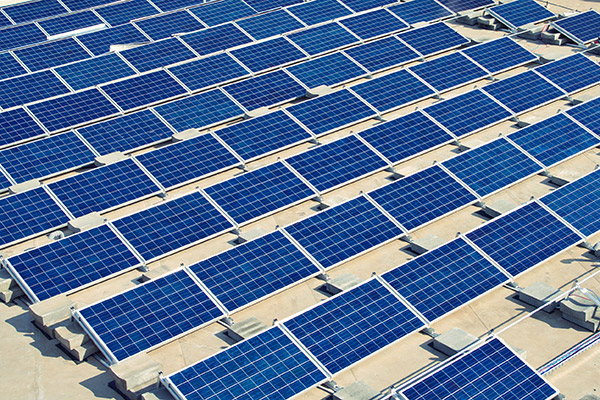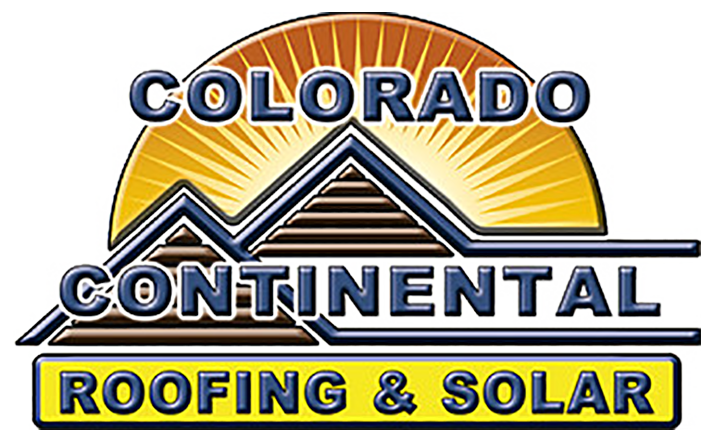
Commercial Photovoltaic Solar Energy
Guide and Resource White Paper
Download White Paper PDF (Click Here)
By: Colorado Continental Commercial Roofing and Solar
Headquartered in Denver Colorado – Serving the U.S.
720-726-6775
Commercial solar energy generation may enhance a business’s bottom line by reducing electric energy costs significantly more than the cost of the capital outlay for an installed system. In many cases, the principle, interest and lost opportunity costs of an investment in solar energy can be recovered within 60 months. During the remaining 20 to 25 year lifespan of the installation, the business can enjoy stable and low-cost energy use. Furthermore, the business might benefit from positive perceptions for being environmentally friendly by both customers and employees.
Time-to-pay-back is the time it takes to recoup the capital outlay of a solar installation including the principle, interest and lost opportunity costs of the investment.
Time-to-pay-back can be limited to 60 months or fewer because, as discussed below, there are a number of Federal, State and local programs in place which reduce the impact of the capital outlay, provide for an accelerated depreciation schedule (MACRS), provide property and sales tax incentives and provide energy credits for daytime energy generation on a retail basis.
The time-to-pay-back depends on a number of factors, including:
- tax credits up to 30% of the installed price for energy property (solar equipment and roofing, see below, and click here for energy.gov info or here for PDF of web page),
- accelerated depreciation schedules on energy property (as few as 5 years for depreciation),
- property tax abatements for the value of the solar equipment in certain locales,
- sales tax abatements for solar equipment and installation in certain locales, and
- value of the energy generated by the solar system versus the cost of the company’s energy consumption.
It is possible to receive the benefits mentioned above for a portion of the expense associated with a new roof installed in conjunction with certain solar equipment. In these cases, the new roof is considered an energy property and is part of the energy generating system. Requirements include:
- the roof must be a solar reflective “cool roof” which increases the energy generated by the solar panels, and
- the solar plant must be an “active” system which generates electricity (e.g., a photovoltaic system).
The value of the new roof benefits are based on the increased price of the solar reflective roof over and above the cost to install a minimal non-reflective roof in your locale. The solar equipment must use bi-facial panels. Bi-facial solar panels have solar cells on both sides of the panels and are positioned at an angle to the roof. They generate electricity from sunlight striking both faces: direct sunlight generates electricity on the front face and light reflected from the roof hits the solar cells on the back face of the panels to generate substantial additional energy. Click here to download an IRS “ruling request letter” for tax treatment of cool roof plus solar installation.
Given the additional benefits available for installing a solar reflective roof and bi-facial panels, it often makes sense to replace the building’s roof prior to installation of the solar panels. Plus, it is helpful to have the longevity of the roof surface coincide with the 25 to 30 year longevity of the solar panels.
When a solar electric system is connected to the utility grid, electricity flows from the solar panels into the grid (after being transformed from DC to AC power using an inverter). The solar energy produced is credited to the company to offset the company’s consumption of energy. Grid connected systems avoid the need for energy storage by the commercial enterprise for off-peak or nighttime use. When possible, companies often size their solar plant to produce as much energy as they consume over a billing cycle for maximum savings (i.e., a zero dollar electric bill). Electric bills cannot be negative where the utility pays the company for producing excess energy over a complete billing cycle.
Net metering is a practice mandated by law in 35 states (click here for state information) and refers to the pricing of the energy produced versus consumed. Excess energy produced by the solar panels is credited at the going rate when it is produced, generally at a higher peak rate. Consumption of energy is billed at the rate in effect when it is consumed, generally at a lower off-peak rate. Net metering benefits the commercial enterprise in that excess energy produced during the day when electric rates are highest is credited at the higher rate, for the company to use at non-peak times when rates are typically lower. This arrangement also benefits the utility in that solar electric systems are at their most efficient when in full sun which roughly coincides with peak demand. This helps to alleviate a critical issue for the utility by adding energy to the grid during peak use.
We install solar panels manufactured in the U.S. by Prism Solar Technologies, Inc (www.PrismSolar.com). Prism Solar provides a “Design Guide for Bifacial Solar Modules” (click to download). The design guide is useful for developing an understanding of the equipment and techniques used to maximize energy production. Colorado Continental will help with cost management of the project and will help your company achieve a stable cost structure for your energy needs.
Consultation

Installation

Savings



